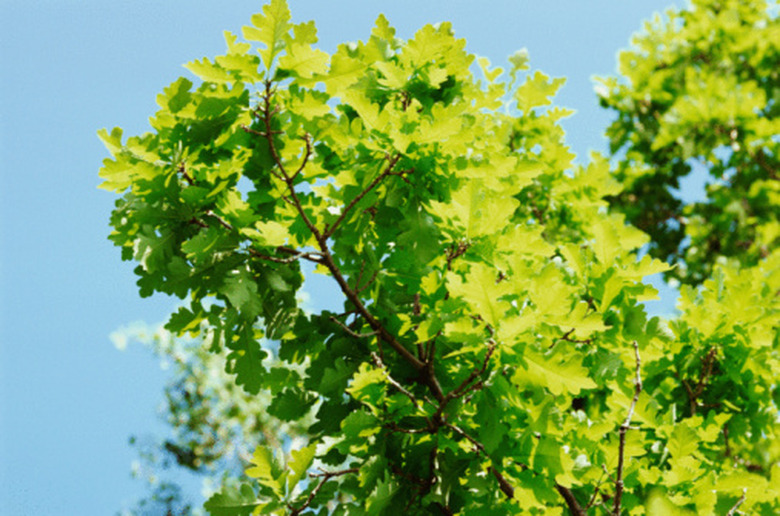Why Oak Trees Don't Produce Acorns Until They Are 50 Years Old
Fifty years to start growing acorns seems like an immense amount of time. Pollination between the male and female flowers of the tree plays a role in how long it takes for the acorn fruit to begin blooming.
Age
The majority of oak trees do indeed bloom acorns well before the age of 50. "Most species of oaks begin producing acorns at about 20 years old. Peak production occurs from about 50 to 80 years," reports the University of Tennessee Extension service. Oak trees younger than 50 are likely producing acorns, but perhaps not in especially noticeable numbers.
Health
Acorn production from an oak tree older than 80 tends to be minimal, and certain varieties of oak emit more acorns than others. Healthy oaks with majestic, prominent crowns that tower over other tree canopies will bloom more of the seed than weakened, unhealthy oaks. Sometimes extreme production one year will be followed by a season of nominal blooming as the oak regains its energy.
- Fifty years to start growing acorns seems like an immense amount of time.
- Oak trees younger than 50 are likely producing acorns, but perhaps not in especially noticeable numbers.
Location
Other factors may influence the amount of time that it takes for an oak to produce acorns. Trees that find themselves in crowded stands often begin production later in life as a result of increased competition for fertilization between flowers. And a 1993 study by the U.S. Forest Service found that oak trees in the central Appalachians produced bountiful acorn crops only once per decade.
Years Can It Take For An Oak Tree To Produce Its First Acorn?
Depending on their species, the trees are 20 to 30 years old when they produce their first acorns. Even then, acorn production is not consistent from year to year. Larger canopied trees receiving more light produce more acorns than smaller trees in shadier conditions. The bur oak (Quercus macrocarpa) is a white oak that doesn't produce its first acorns until it is 35 years old. The tree produces large acorns, and each one has a spiky cap that covers one-half of the acorn. Bur oak tree is hardy in USDA zones 3 through 8. The span of time between its significant acorn crops can be four to 10 years. Falling to the ground in September and October, white oak acorns are an important food source for wildlife.
- Other factors may influence the amount of time that it takes for an oak to produce acorns.
- The bur oak (Quercus macrocarpa) is a white oak that doesn't produce its first acorns until it is 35 years old.
References
- University of Tennessee Extension: How Do Acorns Develop?
- University of Tennessee Extension: How Do Acorns Develop?
- University of Missouri Extension: Managing Oaks for Acorn Production to Benefit Wildlife in Missouri
- Oklahoma Cooperative Extension Service: Growing Oak Trees from Seed
- Arbor Day Foundation: Oak, Pin — Quercus Palustris
- Arbor Day Foundation: Oak, Bur — Quercus Macrocarpa
- Arbor Day Foundation: Oak, White — Quercus Alba
